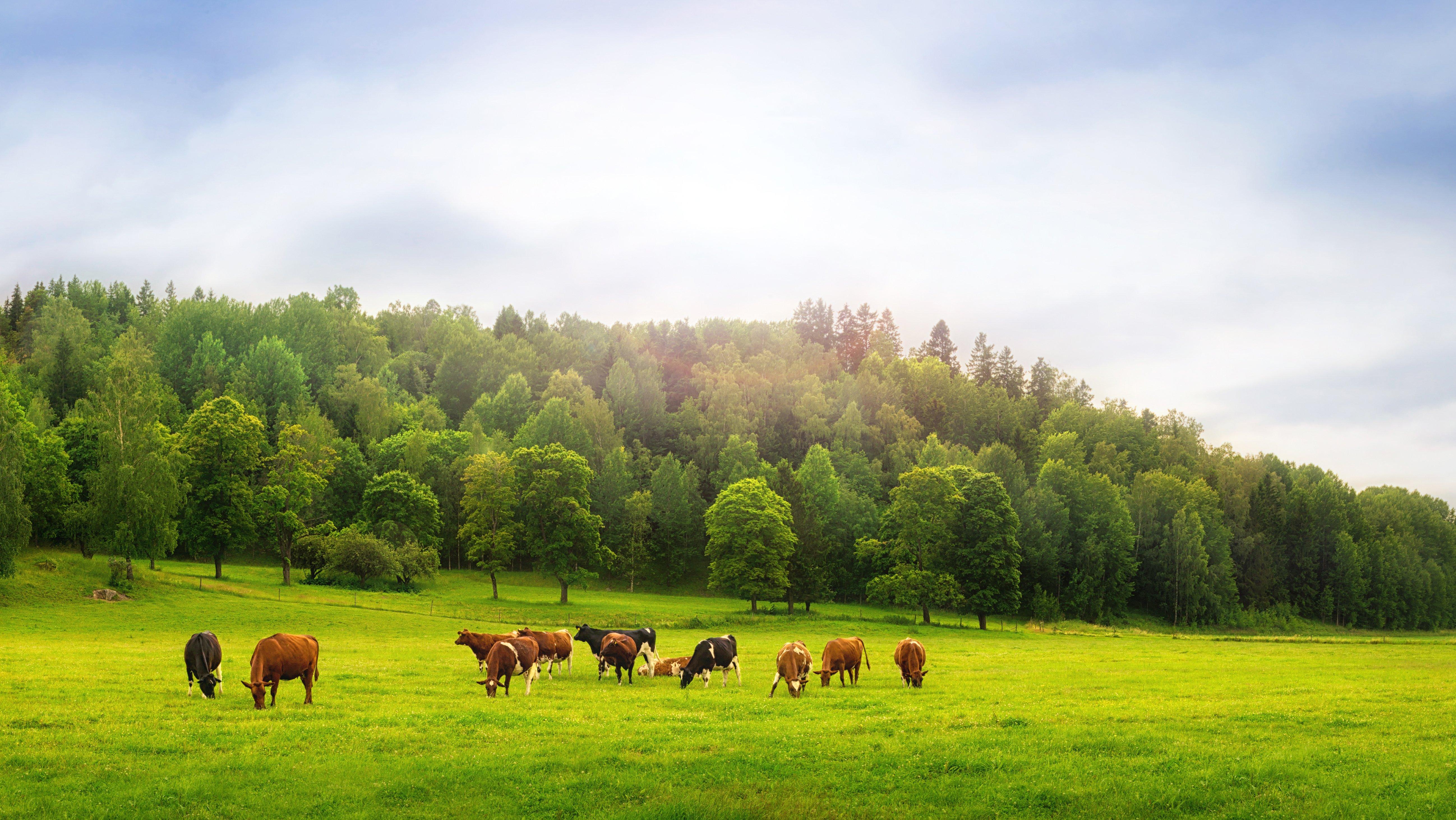A researcher from the Caesar Kleberg Wildlife Research Institute at Texas A&M suggests it is.

Putting too many cattle on the landscape damages deer habitat and overall deer health.
The Southeast and especially the Midwest comprise the bulk of beef cattle country. These are also the two leading regions for whitetail production in America. Naturally, where two abundant species exist, competition is inevitable.
Cattle and whitetails are ruminants and have very similar digestive systems. This allows them to eat similar food sources, often competing for the same resources. There are slight differences, though. Cattle are grazers, meaning they eat mostly grasses, but also target other forage. They also have the capacity to digest other roughages. On the other hand, whitetails aren’t true grazers. Instead, they are concentrate selectors, meaning they target the best parts of the best plants. Generally, these are the plants that are highest in carbohydrates, protein and other prioritized nutrients.
Obviously, although cattle are true grazers and not concentrate selectors, they oftenb consume the best plants on the landscape. Therefore, this limits the available nutrients for whitetails.
Bryan Spencer, a research assistant with the Caesar Kleberg Wildlife Research Institute at Texas A&M University-Kingsville, dug into the long-held belief that cattle grazing is damaging vital deer habitat. Spencer subsequently presented his compelling data at the Southeastern Deer Study Group meeting in Louisiana. Before his research, he expected cattle grazing to negatively affect whitetails that resided in grazing areas. He was correct.
“We were expecting deer to have some type of nutritional deficit due to cattle grazing, especially at higher stocking rates,” Spencer said. “However, we thought environmental conditions would play a significant role in this effect. Such as, this nutritional deficit would be less in a good, productive wet year versus a dry year.”

When cattle presence exceeds thresholds, Spencer determined that adding just one cow (or bull) per 100 acres can reduce antler scores by more than 1 inch. Image by Honeycutt Creative
Spencer was largely correct in expected outcomes, but there were critical surprises in the data.
“It was rather surprising when we learned that antler scores, fall lactation, body weight and rump fat all showed different responses to cattle stocking and the environment,” Spencer said. “For example, a one-cow-per-100-acre increase in cattle stocking rates reduced antler score approximately 1.5 inches and male body weight approximately 1 pound.”
Unsurprisingly, cattle presence negatively affected does, too. Increased cattle presence reduced doe rump fat. Sadly, during dryer years and areas with sandier soils, does were already in poor health and had little to no rump fat to spare or lose to begin with.
“While smaller antler scores might negatively impact hunter satisfaction, we should be equally concerned that cattle stocking was reducing body weights and body fat in deer,” Spencer said. “Greater body weight and fat in deer are often associated with greater adult survival and fawning successes.”
Obviously, competition with cattle can influence herd productivity. Spencer offers a clear message from his studies. If managing your land for livestock and deer, take caution. Be aware of what can happen, especially with higher concentrations of beef on the land. Livestock can degrade the habitat to a point that it takes serious tolls on whitetails, resulting in declining herd health.
Despite these results, the research isn’t without positive news. A limited number of cattle can have a positive impact on the habitat and overall herd health.
“These results might sound pretty disheartening,” Spencer said. “But some research suggests some light grazing is beneficial for deer by stimulating forb growth. People should reach out to their state game agency or extension office to understand the best grazing practices in their area.”
Always find that silver lining, folks. Often, it’s subtle but present.
(Don’t Miss: WHAT IS DRONE DEER RECOVERY?)










